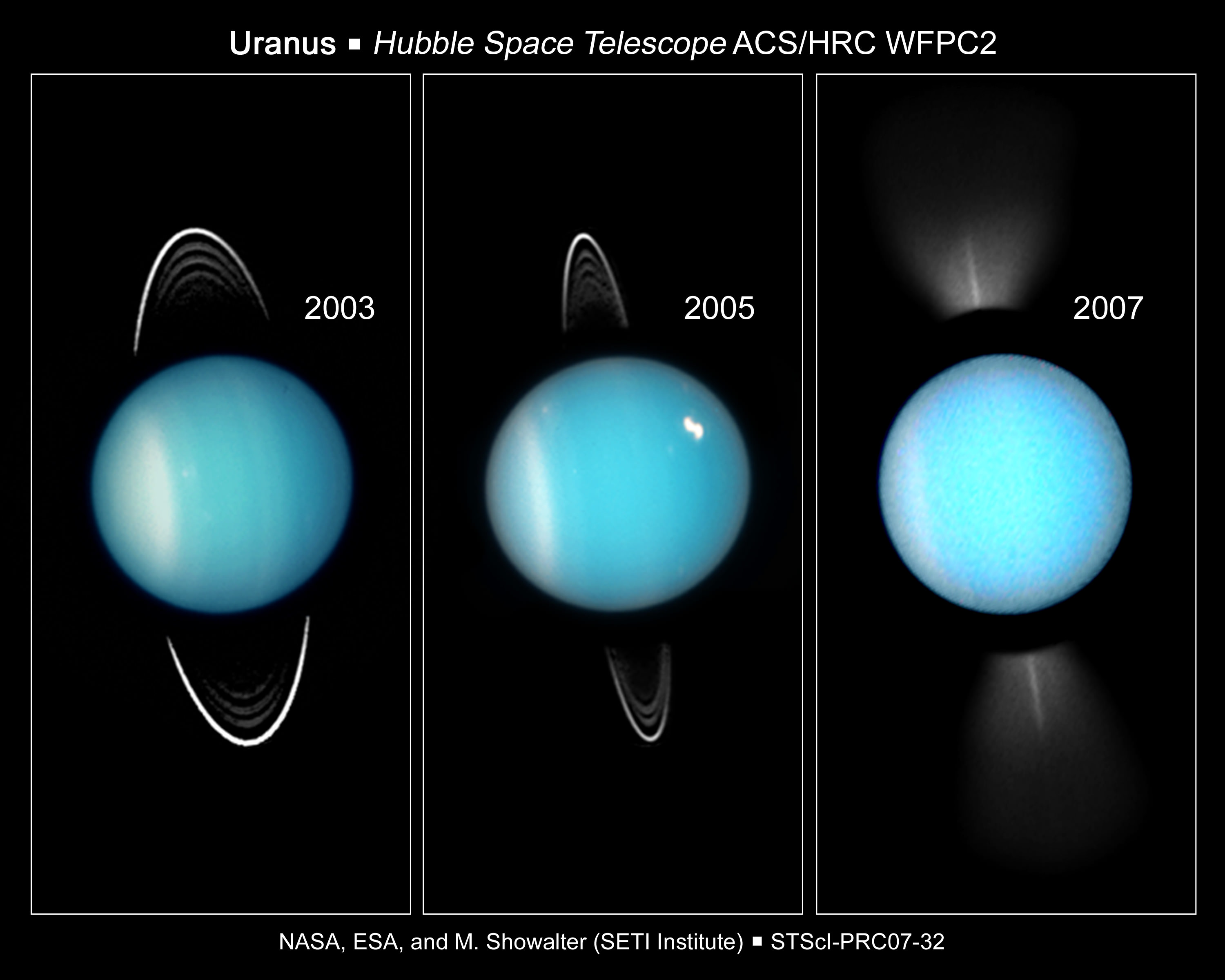How’s the temperature on Uranus? Cold. In fact, the temperature of Uranus makes it the coldest planet in the Solar System. The average temperature of the cloud tops on Uranus is 49 K (?224 °C).
Why is Uranus so cold? The big problem is that Uranus isn’t generating any heat. The other giant planets in the Solar System actually give off more heat than they receive from the Sun. This is because they’re slowly compacting down, and this generates high temperatures inside their cores. Uranus has a core of only 5,000 K, while Jupiter’s core is 30,000 K. If you removed the Sun, Jupiter would still be visible in infrared telescopes because of this internal warmth, but Uranus would be very dark.
Astronomers aren’t sure why Uranus has such a low core temperature, but they think it has something to do with its bizarre rotation. Unlike the rest of the planets in the Solar System, Uranus is tilted right over onto its side. Scientists think that Uranus has a massive collision early on in its history, which knocked it over. This collision might have also allowed the planet to release much of its internal heat. Others believe that something about Uranus’ internal structure allows it to release this heat more easily than other planets.
We have written many articles about Uranus here on Universe Today. Here’s an article about how Uranus can actually get pretty stormy, and here’s an article about what should be found inside a gas giant.
If you’d like more info on Uranus, check out Hubblesite’s News Releases about Uranus. And here’s a link to the NASA’s Solar System Exploration Guide to Uranus.
We have recorded an episode of Astronomy Cast just about Uranus. You can access it here: Episode 62: Uranus.

